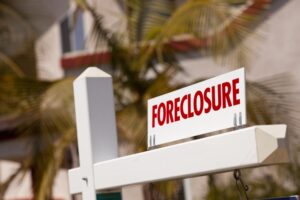 Loan Modification for Avoiding Foreclosure: A Guide
Loan Modification for Avoiding Foreclosure: A Guide
As a bankruptcy lawyer who has dedicated years to helping homeowners avoid foreclosure, I understand the stress and uncertainty that comes with the threat of losing your home. I’ve also seen how many people try to use loan modification to avoid foreclosure
This process can provide much-needed short-term relief by altering the terms of your mortgage to make payments more manageable. But if you’re facing foreclosure, it comes with major drawbacks and even dangers.
In this post, I’ll explain what loan modification is, the application process, and some of those big risks you should be aware of.
What Is Loan Modification?
Loan modification is a process where your lender agrees to change the terms of your mortgage. Modifications can include:
- lowering the interest rate
- extending the loan term, or even
- reducing the principal balance.
The goal is to reduce your monthly payments to a level you can afford, which in theory helps you avoid foreclosure.
 Eligibility for Loan Modification
Eligibility for Loan Modification
Eligibility for a loan modification varies by lender, but generally, you need to meet the following criteria:
1. Demonstrate Financial Hardship
You have to show you’re experiencing financial difficulties that make it challenging to keep up with your mortgage payments. This could be due to job loss, medical expenses, or other significant financial setbacks.
2. Proof of Income
You need to provide proof of your current income to show you can afford the modified payments. This includes pay stubs, tax returns, and other relevant documentation.
3. Owner-Occupied Property
Typically, the property has to be your primary residence. Investment properties and second homes usually aren’t eligible.
4. Default or Imminent Risk of Default
You usually either need to be in default at the point of the modification or at significant risk of defaulting on your loan.
 The Application Process
The Application Process
Applying for a loan modification can be a complex and time-consuming process. Here’s a step-by-step guide to help you navigate it:
Step 1: Contact Your Lender
First, reach out to your lender to express your interest in a loan modification. They’ll provide you with specific instructions and necessary forms.
Step 2: Gather Documentation
Collect all required documents, including proof of income, bank statements, a hardship letter, and any other information your lender requests.
Step 3: Submit Your Application
Complete the application forms and submit them along with the gathered documentation. Make sure to keep copies of everything you send.
Step 4: Negotiate Terms
If your initial application is accepted, your lender will propose new loan terms. Be prepared to negotiate to ensure the terms are realistic and manageable for you.
Step 5: Trial Period
Some lenders require a trial period where you need to make modified payments for a few months before the modification becomes permanent.
Risks of Depending on Loan Modification
While loan modification can be a lifeline, it’s essential to be aware of the potential risks. As a bankruptcy lawyer for over four decades, I’ve met with so many people who tried to use loan modification to avoid bankruptcy. And truthfully, it almost never worked for them, and usually causes more harm than good.
First, a loan modification isn’t a cure-all. If your financial situation worsens, you might still face foreclosure down the line.
And unfortunately, the market is rife with scam artists promising guaranteed loan modifications for an upfront fee. Always work directly with your lender or through a reputable attorney.
But more than anything, it’s only a temporary stop-gap. As one example, a lot of people got loan modifications during Covid. But then the date their terms ended, the bank came back wanting the additional amount in a lump sum. Their modifications saved them money over the allotted time, but then they had to pay it afterward – and they ended up facing foreclosure all over again.
At the very least, let an attorney look at the terms before you sign, especially if you’re risking foreclosure.
 The Difference Between Loan Modification and Chapter 13 Bankruptcy
The Difference Between Loan Modification and Chapter 13 Bankruptcy
Using loan modification to avoid foreclosure is a common strategy to keep your home. But in my opinion, it’s not always the best, safest, or most effective way. To put a permanent stop to foreclosure, you should consider Chapter 13 bankruptcy.
Chapter 13 bankruptcy allows you to create an affordable payment plan with the help of your attorney and the courts. It’s legally binding, so the banks can’t come back later demanding more. And it’s designed around you and your income, so you can always manage the payments.
As a bankruptcy lawyer specializing in foreclosure prevention, I can guide you through this process and help you decide whether a loan modification is the right solution for your situation or whether Chapter 13 would be a better fit. Either way, we can help you avoid foreclosure and get the fresh start you need.
If you’re facing foreclosure, don’t wait—reach out today for a consultation. Together, we can explore all your options and work towards a new financial future, free of debt.

